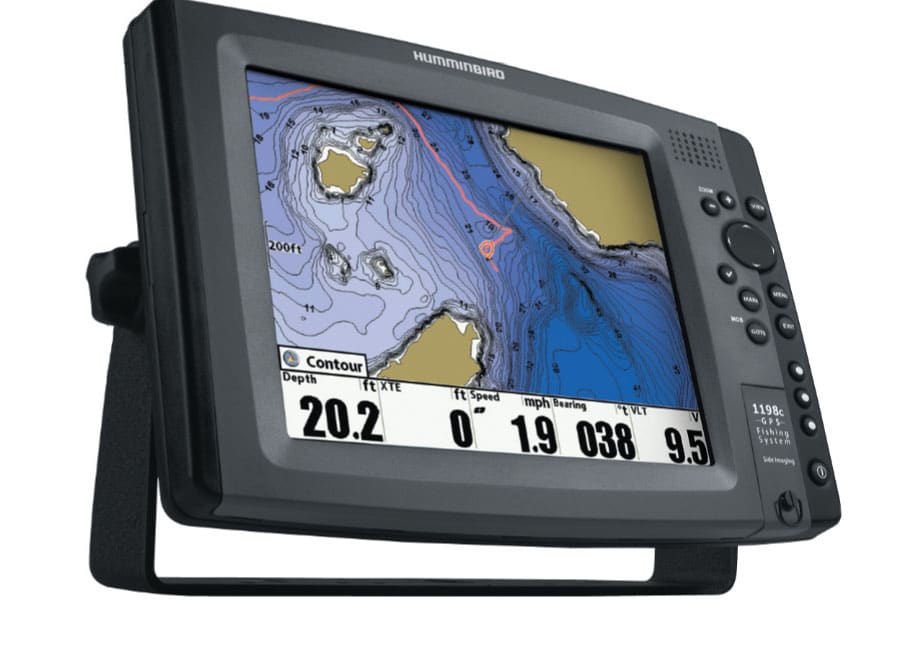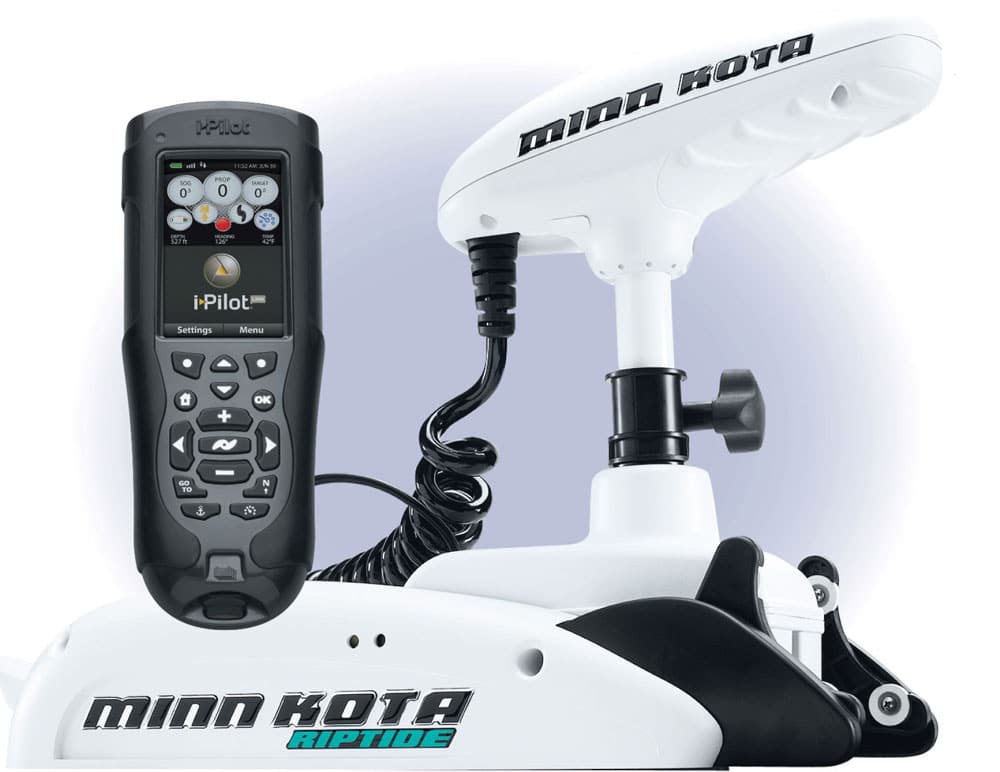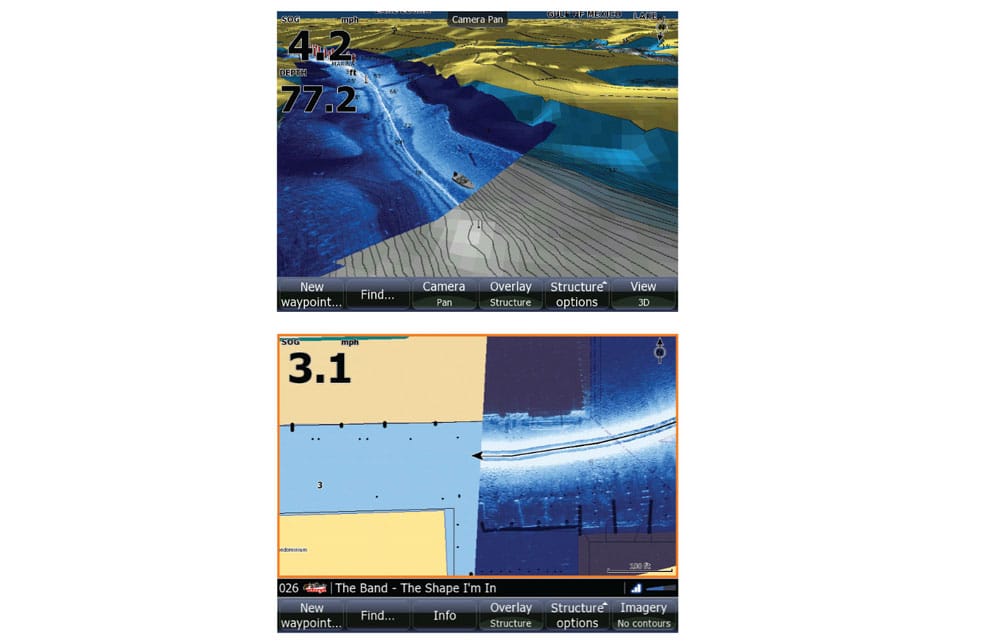
The electronic tools we are accustomed to using separately — plotter, sounder and cartography — are increasingly working together in new ways.
Significant inroads in combined functions are leading to better, more efficient fish finding as these components begin trespassing on one another’s territory, talking between themselves to share information. Cross-functioning configurations combine the strength of each component and allow them to communicate and work together in real time. The result is new and remarkably practical hybrid tools with the power to radically improve the way we fish.
** Drain the Bay**
One of the more intriguing developments is Navico’s StructureMap software, which puts the plotter and side-scan sonar in touch to produce some distinctive personalized charts. We had a chance to look at this system this past winter in Miami.
Cruising around Lummus Island, we activated the StructureMap feature, and began to record a high-res picture of the seawall and pilings, and the entire bottom to both sides of the boat, printed out on the plotter screen in a swath behind us. The sonar picture we generated looked pretty much as though all the water had been drained out of the bay, revealing everything under the boat and up to the shoreline.
This trail of high-res imagery of the bottom can be saved as it is created, and with multiple passes, recorded tracks can be assembled in a composite image, for a complete underwater picture of the bottom you’ve gone over.
“I’ve been in the sonar business nearly 30 years, and I have never seen anything like this before,” says Stuart Wood, senior manager for Navico.
The view of the bottom you record can now be stored to memory, recalled later and overlaid on the plotter, complete with any waypoints you might have saved on the original scan.
The accuracy of the overlay — the way the side-scan image lines up with the cartography on the plotter — is unexpectedly accurate. The combined images create a more complete picture of where fish are lying.
“When I spot fish on the side-scan, I can superimpose that image on the plotter screen, and it all lines up correctly. For instance, I might see fish on the side-scan, but when I overlay that image in the plotter, I’ll see the fish are sitting under a dock marked on the plotter but not the scan. It’s kind of freaky,” says Wood.
StructureMap is compatible with Navico’s Insight cartography, Navionics in 2-D and 3-D display modes, and all HDS-compatible charting cards on Lowrance HDS Gen2 models and Simrad NSS software, with the StructureScan LSS2 sonar imaging module option (about $500).
** Hands Off**
A joint project between Minnkota and Humminbird, the iPilot Link, offers another pairing of tools. This system allows Minnkota Riptide SP or FT trolling motors and the Humminbird chart plotter — series 1100, 800 series, and the newer 900 and 700 series — to communicate via Ethernet connection. The setup includes a replacement head for the trolling motor and runs about $800.
Operated by remote, the iPilot Link provides a go-to function, directing the trolling motor to steer to a waypoint. Once there, the Spot Lock feature keeps your boat sitting within five feet of the spot.
The iTrack mode allows you to record and save a track — a trolling path that can be recalled and repeated later — and it’s all hands-free once you tell it what to do.
In conjunction with Lakemaster cartography — currently available for selected coastal areas but rapidly rolling out new coverage — there’s also a function that follows bottom contours.
The system is scheduled for release in December, but it’s been widely field-tested already.
Capt. Ed Zyak, of Stuart, Florida, has been running the iPilot Link through its paces. He says it has changed the way he fishes in places he’s been fishing all his life.
“I use it more than I thought I would,” he says. “When pompano fishing, I had always used GPS to find my spots. Now that I can track along the contours, I’ve found places two feet deeper than the surrounding area, and the fish are always there. I am finding stuff I didn’t expect to find.”
An offset feature directs the motor to track the boat a preset distance from the chosen contour — say at comfortable casting range.
It’s also changed the way he pursues one of his hallmarks: big trout.
“I fish for big trout in the Indian River Lagoon, and they usually hang on a four- to five-foot drop-off,” he says. “I used to drift across those spots, but now I can follow a contour across the lagoon and stay in the productive zone a lot longer.”
These two innovative products aren’t the only cooperative components in the modern electronics suite, but they are fairly representative of the trend toward integration by manufacturers to combine tools to create vastly improved fish finding.












